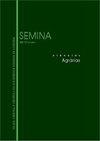仅仅考虑质地就足以根据土壤密度来定义压实度吗?
IF 0.5
4区 农林科学
Q4 AGRICULTURE, MULTIDISCIPLINARY
引用次数: 0
摘要
由于土壤管理的类型不同,表示粘性土壤压实的堆积密度值对应于大范围的值(1.30-1.47 Mg m-3)。我们的假设是,如果我们考虑类似管理组(落地和未落地的管理组)内的体积密度值,则每个管理组内的值将更准确。我们在这项工作中的目标是使用(Yates&Cochran,1938;Whitehead,2002)的概念来分析对这些结果进行分组的合适的统计方法,以就一个经过检验的假设达成共识,即1977年至2021年间调查的最大数量的密度值,用于研究不同管理下的粘性土壤中的压实,以验证我们的假设是否会得到证实。我们在文献中选择了1521项体积密度研究,对应于44年(1977年和2021年),这些研究通过统计技术进行分析,该技术整合了同一主题的两项或两项以上独立研究的结果,并将其合并为一个汇总测量(部分林业)。根据文献中收集的数据,可以将粘性土壤中的堆积密度和管理分为两组,这两组表示压实:对土壤进行很少或不进行操作的管理,如牧场和免耕,密度在1.41-1.45 Mg.m-3(平均1.43 Mgm-3)之间,而其他管理,如常规耕作和少耕,土壤密度介于1.31-1.38 Mg.m-3之间(平均1.35 Mgm-3)。最后,我们得出结论,必须考虑土壤管理的质地和类型来分析压实。本文章由计算机程序翻译,如有差异,请以英文原文为准。
Is just considering texture enough to define compaction on the basis of soil density?
The bulk density values indicative of compaction in clayey soils correspond to a wide range of values (1.30-1.47 Mg m-3), due to the diverse types of soil management. Our hypothesis is that if we consider bulk density values within similar management groups (those that fall to the ground and those that do not fall), the values will be more accurate within each management group. Our objective in this work was to analyze using the concepts of (Yates & Cochran, 1938; Whitehead, 2002) what is a suitable statistical way of grouping these results to reach a consensus regarding a tested hypothesis, the greatest number of density values surveyed between 1977 and 2021, considered for the study of compaction in clayey Oxisols under different managements, to verify whether our hypothesis will be confirmed. We selected 1,521 studies with bulk densities in the literature, corresponding to 44 years (1977 and 2021), which were analyzed by a statistical technique that integrates the results of two or more independent studies on the same subject and combines them into a summary measure (portion forestry). From the data collected in the literature, it was possible to separate two groups of bulk density and management in clayey soils indicative of compaction: the managements that perform little or no manipulation of the soil, such as pasture and no-tillage, densities between 1.41-1.45 Mg.m-3 (average 1.43 Mg m-3), and for the others, such as conventional plowing and minimum tillage, soil densities between 1.31-1.38 Mg.m-3 (average 1.35 Mg m-3). Finally, we conclude that compaction must be analyzed considering the texture and type of soil management.
求助全文
通过发布文献求助,成功后即可免费获取论文全文。
去求助
来源期刊

Semina-ciencias Agrarias
农林科学-农业综合
CiteScore
1.10
自引率
0.00%
发文量
148
审稿时长
3-6 weeks
期刊介绍:
The Journal Semina Ciencias Agrarias (Semina: Cien. Agrar.) is a quarterly publication promoting Science and Technology and is associated with the State University of Londrina. It publishes original and review articles, as well as case reports and communications in the field of Agricultural Sciences, Animal Sciences, Food Sciences and Veterinary Medicine.
 求助内容:
求助内容: 应助结果提醒方式:
应助结果提醒方式:


